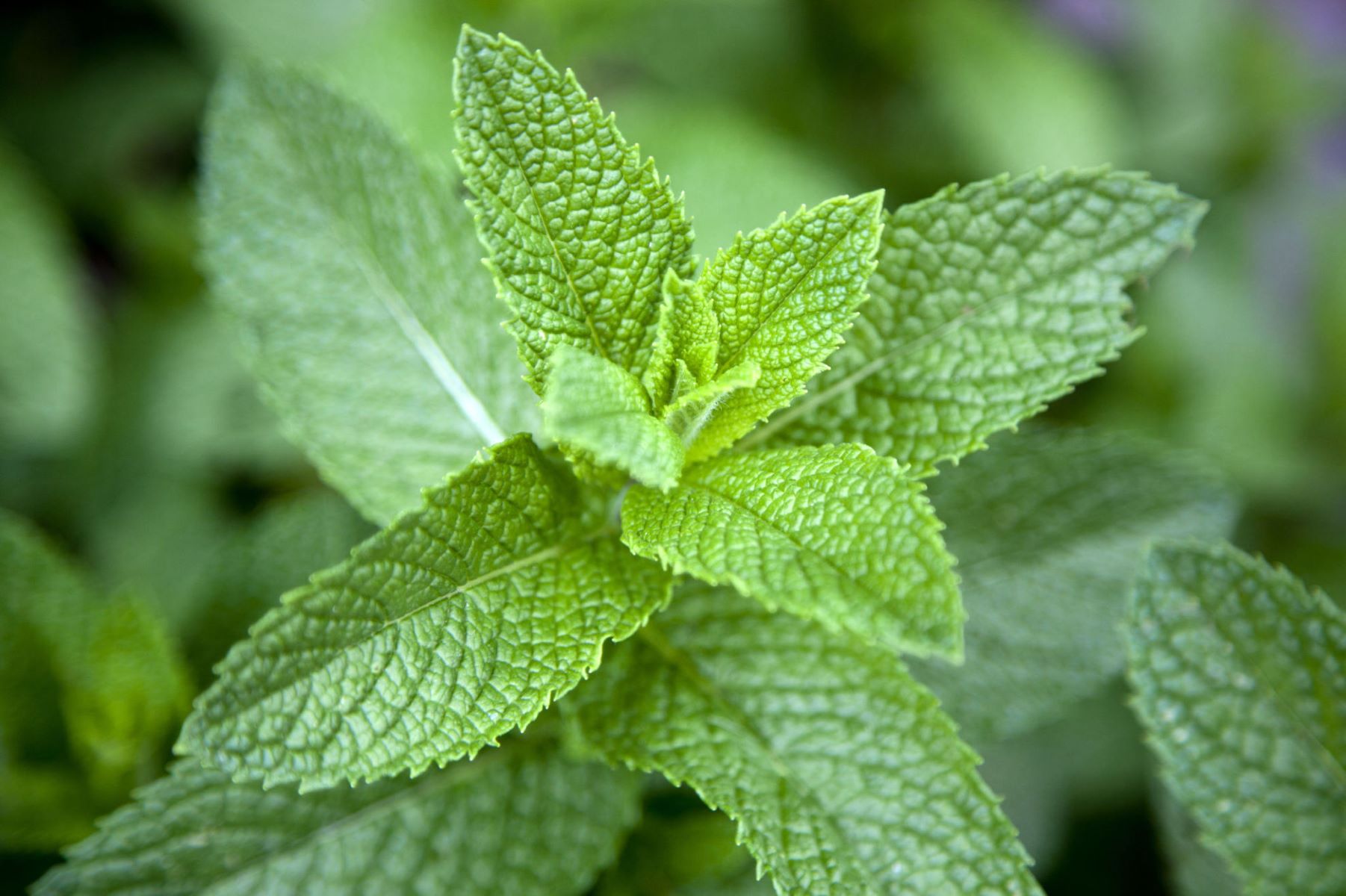Home>Health and Wellness>The Surprising Health Risks Of Overindulging In Mints


Health and Wellness
The Surprising Health Risks Of Overindulging In Mints
Published: February 9, 2024
Discover the unexpected health hazards of excessive mint consumption and learn how to maintain your overall wellness. Explore the potential risks and find helpful tips for a balanced lifestyle.
(Many of the links in this article redirect to a specific reviewed product. Your purchase of these products through affiliate links helps to generate commission for Regretless.com, at no extra cost. Learn more)
Table of Contents
Introduction
Mints are often regarded as a refreshing and delightful treat, offering a burst of coolness and a pleasant flavor. Whether enjoyed as a breath freshener or a sweet indulgence, mints have become a popular choice for many individuals. However, while these tiny confections may seem innocuous, there are surprising health risks associated with overindulging in mints. In this article, we will delve into the potential drawbacks of excessive mint consumption, shedding light on the various ways it can impact our well-being.
From the seemingly harmless breath mints to the enticing mint-flavored candies, these treats often contain a combination of ingredients that can have both positive and negative effects on our health. By exploring the components found in mints, we can gain a deeper understanding of their potential impact on our bodies. Additionally, we will examine the dental health risks, digestive issues, potential allergic reactions, and weight management challenges that can arise from consuming mints excessively.
It's crucial to recognize that moderation is key when it comes to enjoying mints, and being mindful of their potential health implications can empower individuals to make informed choices about their consumption. By unraveling the lesser-known health risks associated with mints, we aim to provide valuable insights that can contribute to a more balanced and informed approach to indulging in these beloved treats.
The Ingredients in Mints
Mints, whether in the form of breath fresheners, candies, or flavorings, often contain a blend of ingredients that contribute to their distinct taste and cooling sensation. The primary components found in mints include menthol, sugar or artificial sweeteners, flavorings, and sometimes additional additives.
Menthol, a compound derived from mint oils such as peppermint and spearmint, is responsible for the characteristic cooling effect that mints impart. This sensation is a result of menthol's ability to activate cold-sensitive receptors in the skin and mucous membranes, creating a refreshing and invigorating feeling when consumed. While this cooling sensation can be enjoyable in moderation, excessive consumption of menthol can lead to adverse effects, as we will explore in subsequent sections.
In addition to menthol, mints often contain sugar or artificial sweeteners to enhance their palatability. The presence of sugar can contribute to the overall calorie content of mint-flavored candies, which is an important consideration for individuals mindful of their sugar intake. Conversely, the use of artificial sweeteners aims to provide sweetness without the added calories, catering to those seeking lower-calorie options. However, it's essential to be aware of the potential health implications associated with both sugar and artificial sweeteners, especially when consumed in excess.
Furthermore, the flavorings used in mints contribute to their diverse taste profiles, ranging from traditional mint to fruit-infused varieties. These flavorings, whether natural or artificial, play a significant role in shaping the overall sensory experience of consuming mints. However, it's important to note that certain artificial flavorings may pose health concerns when consumed excessively, underscoring the importance of moderation in enjoying mint products.
Additionally, some mints may contain additives such as colorants, preservatives, and binding agents to enhance their appearance, shelf life, and texture. While these additives are generally recognized as safe for consumption, it's crucial to be mindful of their presence, particularly for individuals with specific dietary restrictions or sensitivities.
By understanding the various ingredients present in mints, individuals can make informed choices regarding their consumption, taking into account factors such as menthol content, sweeteners, flavorings, and additional additives. This knowledge empowers consumers to approach mint products with a balanced perspective, appreciating their flavors and benefits while being mindful of their potential health implications when consumed in excess.
Dental Health Risks
Excessive consumption of mints can pose significant risks to dental health, impacting both the teeth and gums. While mints are often perceived as a quick solution for combating bad breath, especially in situations where brushing may not be immediately feasible, their frequent intake can lead to adverse effects on oral hygiene.
One of the primary concerns associated with mints is their potential to contribute to tooth decay and cavities. Many mint products, particularly candies and breath fresheners, contain sugar or high levels of acidic flavorings, which can erode tooth enamel over time. The prolonged exposure to these sugary or acidic components, coupled with inadequate oral hygiene practices, creates an environment conducive to dental issues. As a result, individuals who regularly consume mints, especially those with high sugar content, may be at an increased risk of developing cavities and experiencing tooth sensitivity.
Furthermore, the act of sucking on mints or holding them in the mouth for extended periods can lead to a decrease in saliva production. Saliva plays a crucial role in maintaining oral health by neutralizing acids, washing away food particles, and aiding in the remineralization of tooth enamel. Reduced saliva flow, a consequence of prolonged mint consumption, can diminish the mouth's natural defense mechanisms, leaving teeth vulnerable to the detrimental effects of acids and sugars present in mints.
In addition to the impact on teeth, excessive mint consumption can also affect gum health. The sugars and artificial sweeteners found in many mint products can create an environment conducive to bacterial growth, potentially leading to gum inflammation and periodontal issues. Moreover, the abrasive nature of some mint candies can contribute to gum irritation and damage, particularly when consumed frequently over an extended period.
To mitigate these dental health risks, individuals are encouraged to practice moderation when consuming mints, especially those containing sugar or acidic ingredients. Additionally, maintaining a consistent oral hygiene routine, including regular brushing, flossing, and dental check-ups, is essential for preserving dental health while enjoying mint products. By being mindful of the potential impact of mints on dental well-being and adopting proactive oral care practices, individuals can savor these treats responsibly while safeguarding their oral hygiene.
Digestive Issues
Excessive consumption of mints can give rise to a range of digestive issues, impacting the gastrointestinal system in various ways. While mints are often perceived as a harmless indulgence, especially in the context of freshening breath or satisfying a sweet craving, their effects on digestion merit careful consideration.
One of the primary concerns associated with overindulging in mints is the potential for digestive discomfort, including symptoms such as bloating, gas, and indigestion. This can be attributed to the presence of certain ingredients in mints, such as sugar alcohols like sorbitol and mannitol, which are commonly used as sweeteners in sugar-free mint products. While these sugar alcohols offer a sweet taste without the added calories of sugar, they can have a laxative effect when consumed in excessive amounts. This laxative effect can lead to gastrointestinal disturbances, including diarrhea and abdominal discomfort, particularly in individuals with heightened sensitivity to these compounds.
Moreover, the menthol content in mints, known for its cooling and soothing properties, can also impact digestion. While menthol can provide a refreshing sensation when consumed in moderation, excessive intake may lead to a relaxing effect on the muscles of the digestive tract. This muscle relaxation can potentially disrupt normal digestive processes, leading to symptoms such as acid reflux or heartburn in susceptible individuals.
In addition to the direct impact on digestion, the act of consuming mints, particularly in rapid succession, can inadvertently lead to increased air swallowing, known as aerophagia. This can occur when individuals suck on mints or chew mint-flavored gum excessively, leading to the ingestion of excess air. The accumulation of swallowed air in the digestive system can result in bloating, discomfort, and belching, contributing to digestive distress.
To mitigate the risk of digestive issues associated with mint consumption, individuals are advised to be mindful of their intake, especially when consuming products containing sugar alcohols. Moderation is key, particularly for those susceptible to gastrointestinal sensitivities. Additionally, being cognizant of the potential laxative effects of sugar alcohols and the impact of menthol on digestive muscle function can help individuals make informed choices about their mint consumption.
By acknowledging the potential digestive implications of excessive mint intake and adopting a balanced approach to enjoying these treats, individuals can savor the refreshing qualities of mints while minimizing the risk of digestive discomfort.
Potential Allergic Reactions
Excessive consumption of mints can potentially trigger allergic reactions in susceptible individuals, presenting a range of symptoms that warrant careful consideration. While mints are often enjoyed for their refreshing taste and cooling sensation, it's essential to recognize that certain ingredients found in these treats can elicit allergic responses in some people. Understanding the potential allergens present in mints and being aware of the associated symptoms is crucial for individuals with known allergies or heightened sensitivity to specific compounds.
One of the primary allergens found in mint products is menthol, the compound responsible for the characteristic cooling effect. While menthol is generally well-tolerated by most individuals, some may experience allergic reactions upon exposure. Symptoms of menthol allergy can manifest as skin irritation, redness, itching, and in more severe cases, hives or dermatitis. Additionally, inhalation of menthol vapors from mint products can potentially trigger respiratory symptoms in sensitive individuals, such as coughing, wheezing, or shortness of breath.
Furthermore, the flavorings and additives used in mint products, whether natural or artificial, can also serve as potential allergens. Individuals with known sensitivities to certain flavoring agents or food additives may experience allergic reactions upon consuming mint products containing these compounds. Allergic responses to flavorings and additives can manifest as oral itching, swelling of the lips or tongue, throat irritation, or gastrointestinal discomfort, depending on the nature of the allergen and the individual's sensitivity.
In the case of mint-flavored candies or gums containing food colorants, individuals with sensitivities to specific dyes may also be at risk of allergic reactions. Certain synthetic food colorants, such as tartrazine (Yellow 5) or Allura Red (Red 40), have been associated with allergic responses in susceptible individuals, potentially leading to symptoms ranging from skin rashes to gastrointestinal disturbances.
For individuals with known allergies or a history of allergic reactions to food or environmental triggers, it is essential to read ingredient labels carefully and be mindful of potential allergens present in mint products. Being proactive in identifying and avoiding specific allergens can help mitigate the risk of allergic reactions and promote safe enjoyment of mint treats.
By understanding the potential allergens in mints and recognizing the associated symptoms, individuals with known allergies can make informed choices about their consumption, minimizing the risk of allergic reactions while still savoring the refreshing qualities of these treats. Additionally, seeking medical advice and guidance from healthcare professionals can provide valuable support in managing allergies and making informed dietary decisions.
Weight Management Challenges
Excessive consumption of mints can present challenges for individuals striving to manage their weight and overall dietary intake. While mints are often perceived as a low-calorie indulgence, especially in the form of sugar-free breath fresheners or mint-flavored candies, their impact on weight management warrants careful consideration.
One of the primary concerns related to weight management is the potential caloric intake associated with mint products. While sugar-free mints may indeed contain fewer calories than their sugary counterparts, they are not devoid of caloric content. Individuals aiming to maintain or achieve a healthy weight should be mindful of the cumulative caloric intake from all sources, including seemingly innocuous treats such as mints. The consumption of multiple mint products throughout the day, especially in response to cravings or as a substitute for other snacks, can contribute to an unintended increase in overall caloric consumption, potentially impacting weight management efforts.
Furthermore, the act of consuming mints, particularly in the form of candies or gum, can trigger the desire for additional food or snacks. The sweet or refreshing taste of mints may stimulate the appetite, leading individuals to seek out additional sources of sustenance. This can inadvertently result in increased overall calorie intake, potentially hindering weight management goals. Moreover, the presence of sugar alcohols in some sugar-free mint products can have a laxative effect when consumed in excess, leading to gastrointestinal discomfort that may disrupt eating patterns and dietary adherence.
In addition to the direct impact on caloric intake and appetite stimulation, the habitual consumption of mints can influence taste preferences and cravings. Individuals who frequently indulge in mint-flavored treats may develop a heightened preference for sweet or minty flavors, potentially influencing their food choices and overall dietary habits. This can pose challenges for individuals seeking to adopt a balanced and varied diet, as an overreliance on mint products may detract from the consumption of nutrient-dense foods essential for weight management and overall well-being.
To navigate the weight management challenges associated with mint consumption, individuals are encouraged to approach these treats mindfully and in moderation. Being conscious of the caloric content of mint products, particularly sugar-free varieties, and the potential impact on appetite can help individuals make informed choices that align with their weight management goals. Additionally, incorporating a diverse range of nutritious foods and flavors into the diet can mitigate the risk of developing a singular preference for mint or sweet tastes, promoting dietary balance and sustainable weight management practices.
By acknowledging the potential impact of mints on caloric intake, appetite stimulation, and taste preferences, individuals can integrate these treats into their dietary choices in a manner that supports their overall weight management objectives. Striking a balance between enjoyment and mindful consumption can empower individuals to savor the refreshing qualities of mints while maintaining a holistic approach to their dietary and weight management endeavors.
Conclusion
In conclusion, while mints are often enjoyed for their refreshing taste and cooling sensation, it's essential to recognize the potential health risks associated with overindulgence. From the impact on dental health and digestive well-being to the potential for allergic reactions and challenges related to weight management, excessive consumption of mints can pose a range of concerns that warrant careful consideration.
Understanding the ingredients found in mints, including menthol, sweeteners, flavorings, and additives, provides valuable insights into their potential effects on the body. By being aware of these components, individuals can make informed choices about their mint consumption, balancing enjoyment with a mindful approach to their well-being.
The dental health risks stemming from excessive mint consumption highlight the importance of oral hygiene practices and moderation in enjoying mint products. The potential for tooth decay, gum irritation, and reduced saliva production underscores the need for proactive dental care and mindful consumption habits.
Furthermore, the digestive implications of mint intake, particularly related to sugar alcohols and menthol, emphasize the significance of moderation and awareness of individual sensitivities. By approaching mint consumption with mindfulness and moderation, individuals can minimize the risk of digestive discomfort and related issues.
The potential for allergic reactions to menthol, flavorings, additives, and colorants in mint products underscores the importance of reading ingredient labels and being vigilant about known allergens. This awareness can empower individuals with allergies to make informed choices and mitigate the risk of adverse reactions.
Additionally, the impact of mint consumption on weight management highlights the need for mindful dietary choices and an understanding of the cumulative caloric intake from all sources. By approaching mint products as part of a balanced diet and being mindful of their potential influence on appetite and taste preferences, individuals can integrate these treats into their lifestyle while supporting their overall well-being.
In essence, by acknowledging the surprising health risks of overindulging in mints and adopting a balanced and informed approach to their consumption, individuals can savor these treats responsibly while safeguarding their health. Moderation, mindfulness, and proactive oral and digestive care are pivotal in enjoying the refreshing qualities of mints while promoting overall well-being.














